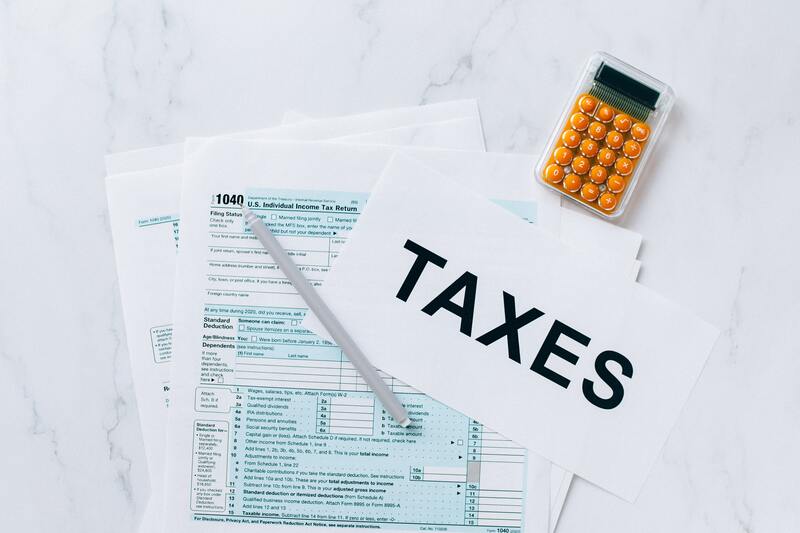Compound interest is often hailed as the secret ingredient to long-term wealth accumulation and financial success. It’s a powerful concept that, when understood and harnessed effectively, can significantly impact one’s financial future.
The importance of knowing this topic cannot be overstated, as it has the potential to transform the way you approach saving, investing, and, ultimately, reaching your financial goals.
The purpose of this blog is to provide you with valuable insights, tips, and strategies to help you unleash the true potential of compound interest.
What is compound interest?
Compound interest is the interest earned not only on the initial principal amount but also on the accumulated interest from previous periods.
In other words, it is the interest on interest, allowing your investments to grow at an exponential rate over time. The more frequently the interest is compounded, the faster your investment grows.
In contrast, simple interest is calculated solely on the initial principal amount throughout the entire investment period, without taking into consideration any interest that has been earned previously. This means that simple interest grows at a linear rate, with the interest amount remaining constant over time.
The primary difference between compound interest and simple interest lies in the way they are calculated and how they accumulate.
Compound interest can significantly enhance the growth of an investment due to the compounding effect, while simple interest provides a more modest and steady growth.
In the long run, investments leveraging compound interest will generally yield higher returns compared to those relying on simple interest.
Why is compound interest considered a powerful wealth-building tool?
Compound interest is considered a powerful wealth-building tool for several reasons:
Exponential growth
Compound interest enables your investments to grow exponentially over time, as you earn interest not only on the initial principal but also on the accumulated interest from previous periods. This compounding effect accelerates the growth of your investment, allowing it to increase in value much faster than with simple interest.
Time advantage
The longer you invest, the more significant the impact of compound interest becomes. As time goes on, the compounding effect intensifies, resulting in a substantial increase in the overall value of your investment.
Passive income generation
Investments that earn compound interest can serve as a source of passive income. As your investment grows, the interest earned can be reinvested, further fueling the growth of your wealth without requiring additional capital or effort.
Encourages disciplined saving
Understanding the power of compound interest can motivate individuals to start saving and investing earlier in life, as they recognize the long-term benefits of harnessing this wealth-building tool.
Diversification and risk management
Compound interest can be earned through various investment vehicles, such as stocks, bonds, mutual funds, and high-yield savings accounts. This allows investors to diversify their portfolios and manage risks while still benefiting from the compounding effect.

Understanding the power of compound interest can motivate individuals to start saving. Photo by Pixabay
How frequently should interest be compounded to maximize my returns?
To maximize your returns, interest should be compounded as frequently as possible. The more often interest is compounded, the greater the overall growth of your investment will be.
This is because each time interest is compounded, it is added to the principal, and from that point on, you earn interest on the new, larger principal amount.
There are various compounding frequencies to choose from, including:
- Annually: Interest is compounded once a year.
- Semi-annually: Interest is compounded twice a year.
- Quarterly: Interest is compounded four times a year.
- Monthly: Interest is compounded twelve times a year.
- Weekly: Interest is compounded 52 times a year.
- Daily: Interest is compounded 365 times a year (or 366 times in a leap year).
In theory, the most optimal compounding frequency would be continuous compounding, where interest is compounded at every infinitesimally small moment in time.
However, continuous compounding is not practically available for most investments.
When selecting an investment, consider the compounding frequency offered, but also take into account other factors such as interest rates, fees, and the investment’s risk profile.
It’s important to strike a balance between maximizing returns through compounding frequency and ensuring that the investment aligns with your overall financial goals and risk tolerance.
What types of investments are best suited for harnessing the power of compound interest?
Several types of investments are well-suited for harnessing the power of compound interest, allowing your money to grow exponentially over time. Some of the most popular investment vehicles that take advantage of compound interest include:
High-yield savings accounts
These accounts offer higher interest rates than traditional savings accounts and typically compound interest daily or monthly. High-yield savings accounts are best for short-term goals and emergency funds, as they provide liquidity and low risk.
Certificates of deposit (CDs)
CDs are time-bound savings instruments offered by banks and credit unions that pay a fixed interest rate for a specified term. Interest is usually compounded daily, monthly, or quarterly. CDs are considered low-risk investments and can be ideal for conservative investors or those with a specific time horizon in mind.
Money market accounts
These accounts are similar to high-yield savings accounts but may offer higher interest rates and require a higher minimum balance. Interest is typically compounded daily or monthly. Money market accounts provide a combination of growth potential and liquidity, making them suitable for medium-term financial goals.
Bonds
Bonds are debt securities issued by corporations, municipalities, or governments that pay periodic interest (coupon payments) to bondholders. The interest earned on bonds can be reinvested to take advantage of compound interest. Bonds are considered relatively low-risk investments, but their risk profile varies depending on the issuer’s creditworthiness.
Dividend reinvestment plans (DRIPs)
DRIPs allow investors to reinvest their cash dividends back into additional shares of the same stock or mutual fund, harnessing the power of compound interest. This strategy enables investors to accumulate more shares over time and benefit from the compounding effect of reinvested dividends.
Mutual funds and exchange-traded funds (ETFs)
These investment vehicles pool money from multiple investors to purchase a diversified portfolio of assets, such as stocks, bonds, or other securities. The returns earned from these assets are reinvested, allowing investors to benefit from the compounding effect. Mutual funds and ETFs are suitable for long-term financial goals and offer varying levels of risk, depending on the underlying assets.
Growth stocks
Investing in stocks that consistently reinvest earnings for business growth can indirectly harness the power of compound interest. As the company’s earnings grow, its stock price may increase, leading to capital appreciation for investors. This strategy involves higher risk than some other options but has the potential for higher returns.

Investing in stocks that consistently reinvest earnings for business growth can indirectly harness the power of compound interest. Photo by Alesia Kozik
How does the time horizon of my investments impact compound interest growth?
The time horizon of your investments plays a crucial role in the growth of compound interest.
In general, the longer your investment time horizon, the more significant the impact of compound interest on your investment’s overall growth. There are several reasons for this:
Exponential growth
Compound interest enables your investments to grow exponentially over time, as you earn interest on both the initial principal and the accumulated interest from previous periods. With a longer investment horizon, the compounding effect has more time to work its magic, leading to a greater increase in the value of your investment.
Frequency of compounding
The longer your investment horizon, the more compounding periods there will be. This means more opportunities for interest to be added to the principal and for the compounding effect to take place.
Time value of money
The time value of money principle states that a dollar received today is worth more than a dollar received in the future because of its potential to earn interest. With a longer investment horizon, the power of compound interest can significantly increase the value of your money over time, helping you outpace inflation and maintain purchasing power.
Risk tolerance
A longer investment horizon typically allows for greater risk tolerance, as investors have more time to recover from potential market downturns. Taking on higher risk investments can lead to higher returns, which can further enhance the growth potential of compound interest.
Dollar-cost averaging
With a longer time horizon, investors can take advantage of dollar-cost averaging, a strategy that involves consistently investing a fixed amount of money at regular intervals. This approach allows investors to accumulate more shares when prices are low and fewer shares when prices are high, potentially increasing the overall value of their investments and maximizing the benefits of compound interest.
How can I use compound interest to reach my financial goals faster?
Using compound interest effectively can help you reach your financial goals faster. Here are some strategies to harness the power of compound interest:
Start early
The sooner you start investing, the more time compound interest has to work in your favor. By beginning early, you allow the exponential growth potential of compound interest to accelerate your progress towards your financial goals.
Reinvest earnings
Reinvest any interest, dividends, or capital gains back into your investment to take full advantage of compound interest. This approach allows your investment to grow at an even faster pace, as you are continually earning interest on both your initial principal and your reinvested earnings.
Maintain a long-term perspective
Compound interest works best over longer periods. Stay committed to your investments and resist the temptation to withdraw funds prematurely. This long-term approach allows the compounding effect to intensify, helping you reach your financial goals more quickly.
Increase your contributions
Regularly increasing your investment contributions can boost the growth of compound interest. Even small increases in contributions can have a significant impact on your overall investment growth over time.
Diversify your investments
Diversify your investment portfolio across different asset classes and investment vehicles to optimize your returns while mitigating risk. A diversified portfolio can help you harness the power of compound interest through various sources, increasing the chances of achieving your financial goals.
Choose investments with higher compounding frequency
Opt for investments that offer more frequent compounding (e.g., daily or monthly) to maximize the benefits of compound interest. This higher frequency allows interest to be added to the principal more often, accelerating the growth of your investment.
Monitor fees and taxes
Pay close attention to fees and taxes associated with your investments, as they can eat into your returns and reduce the impact of compound interest. Look for low-cost investment options and consider tax-efficient investment strategies, such as utilizing tax-advantaged accounts like IRAs or 401(k)s.

Depending on the type of investment and the investor’s tax bracket, taxes can reduce the overall return on compound interest. Photo by Nataliya Vaitkevich
How do taxes and inflation affect compound interest earnings?
Taxes and inflation both have a significant impact on compound interest earnings, and understanding their effects is essential for managing your investments effectively.
Taxes
Depending on the type of investment and the investor’s tax bracket, taxes can reduce the overall return on compound interest. Different investment vehicles are taxed differently:
a. Interest income: Interest earned on savings accounts, CDs, and bonds is generally taxed as ordinary income at your marginal tax rate.
b. Dividends: Qualified dividends from stocks or mutual funds are typically taxed at a lower rate than ordinary income, while non-qualified dividends are taxed at your ordinary income tax rate.
c. Capital gains: Capital gains realized from the sale of investments, like stocks, bonds, or real estate, are subject to capital gains tax. Long-term capital gains (held for more than one year) are generally taxed at lower rates than short-term gains.
To minimize the tax impact on your compound interest earnings, consider tax-advantaged investment vehicles, such as individual retirement accounts (IRAs), 401(k) plans, or 529 college savings plans, which allow your investments to grow tax-deferred or tax-free, depending on the account type.
Inflation
Inflation erodes the purchasing power of money over time, which can reduce the real value of your compound interest earnings. To maintain and grow the real value of your investments, it’s crucial to invest in assets that offer returns that outpace inflation.
Inflation-protected investments, such as Treasury Inflation-Protected Securities (TIPS) or inflation-indexed bonds, can help protect your investment from the negative effects of inflation.
Additionally, investing in assets with higher historical returns, like stocks or real estate, may provide an opportunity to generate returns that outperform inflation over the long term.
How can I use compound interest to pay off debt more quickly?
While compound interest is typically associated with investment growth, understanding its impact can also help you pay off debt more quickly. When you take out a loan, the interest charged on the principal can compound over time, which can increase the overall cost of the debt. Here are some strategies to use the principles of compound interest to pay off your debt more quickly:
- Make extra payments: Whenever possible, make additional payments toward your loan principal. By doing so, you reduce the principal balance, which in turn lowers the interest charged on the remaining balance. This approach accelerates the debt repayment process and reduces the total interest paid over the life of the loan.
- Biweekly payment plan: Instead of making one monthly payment, consider dividing your monthly payment in half and paying that amount every two weeks. With this method, you’ll make the equivalent of one extra monthly payment per year, reducing your principal balance more quickly and lowering the overall interest charged.
- Pay more than the minimum: Always try to pay more than the minimum payment required on your loans or credit cards. By doing so, you’ll reduce the principal balance faster, decrease the interest charged, and shorten the repayment period.
- Target high-interest debt first: If you have multiple debts, prioritize paying off those with the highest interest rates first. This strategy, known as the “avalanche method,” minimizes the overall interest paid and helps you tackle the most expensive debt more quickly.
- Refinance or consolidate debt: If you have high-interest loans or multiple debts, consider refinancing or consolidating them into a single loan with a lower interest rate. This approach can reduce the total interest paid, making it easier to pay off the debt faster.
- Avoid accruing new debt: While focusing on paying off existing debt, avoid taking on new debt, as it can prolong your repayment timeline and increase the overall interest you pay.
- Create a budget and stick to it: Establishing a budget can help you manage your expenses and allocate more funds toward debt repayment. By consistently following a budget, you can pay off debt more quickly and avoid further debt accumulation.

No responses yet